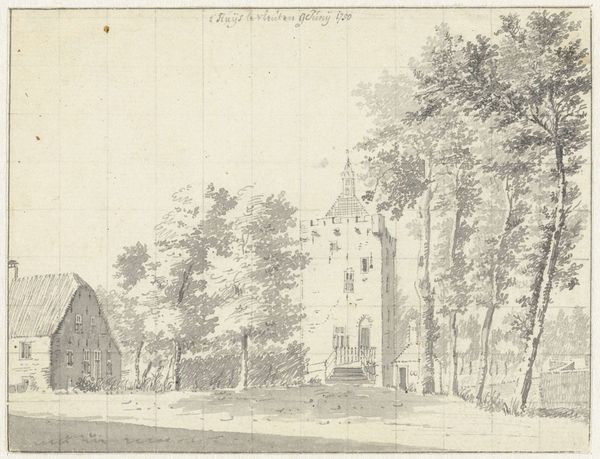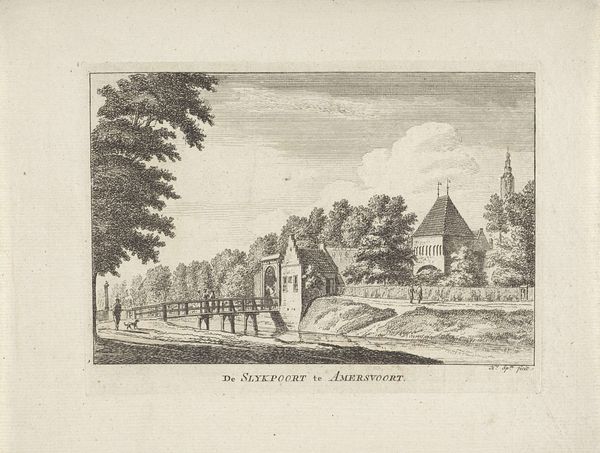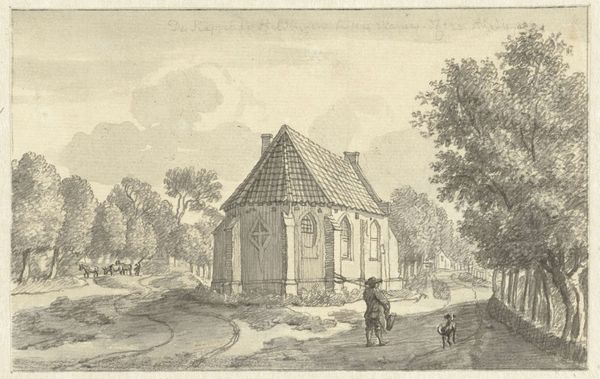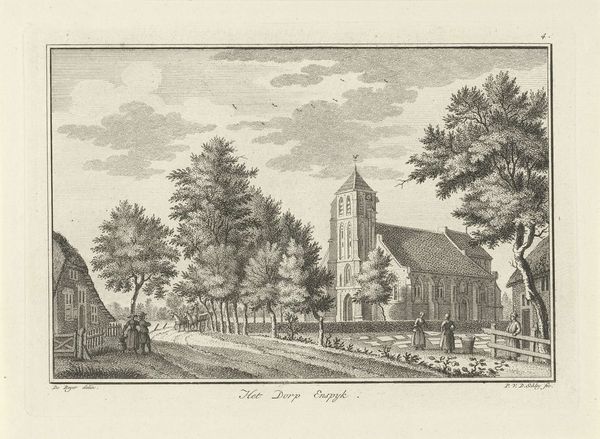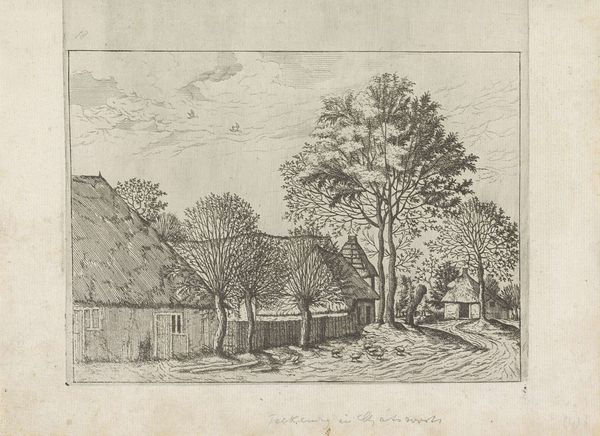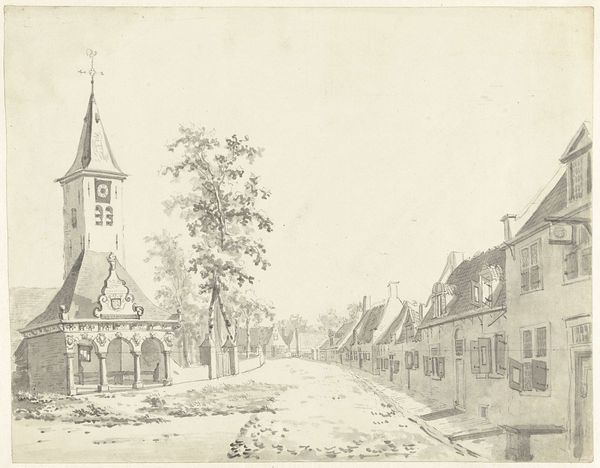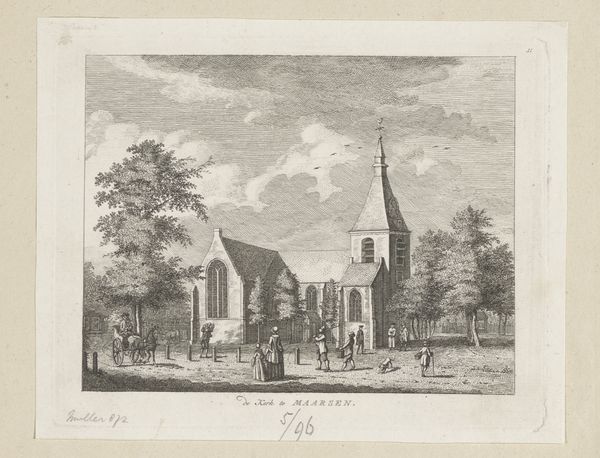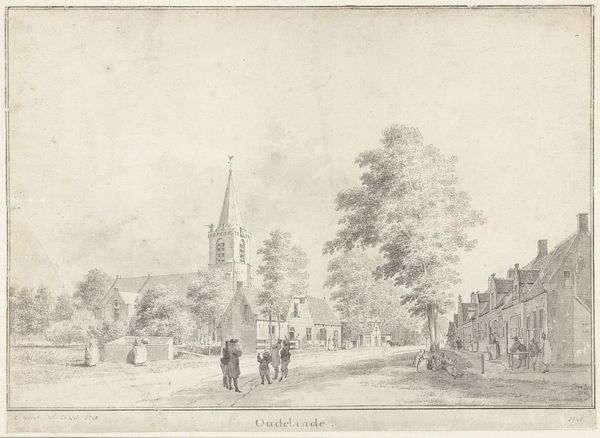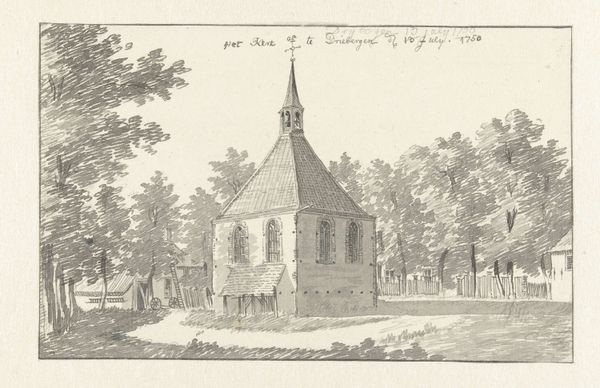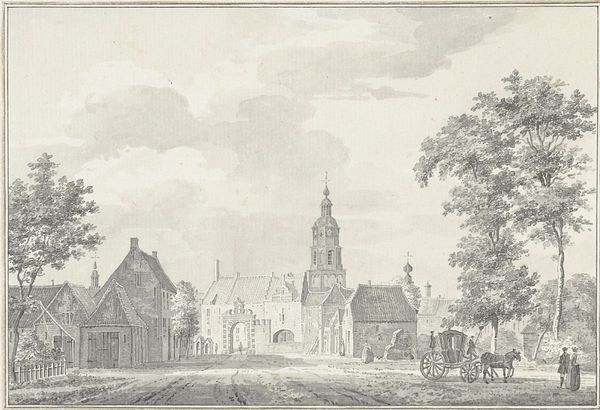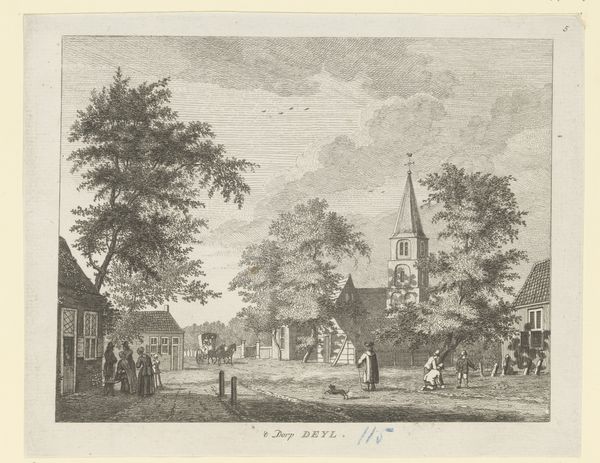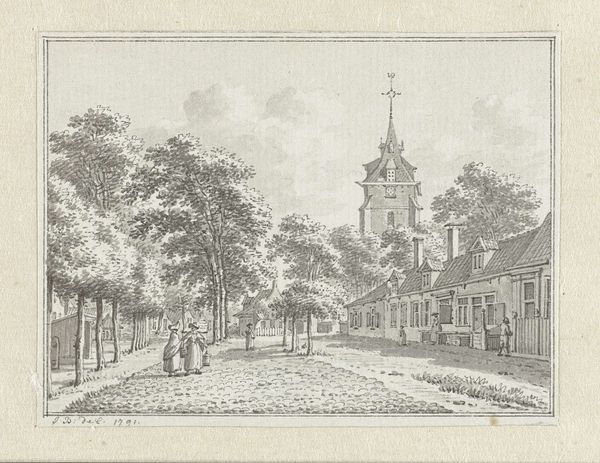
drawing, paper, ink
#
drawing
#
aged paper
#
light pencil work
#
dutch-golden-age
#
old engraving style
#
sketch book
#
landscape
#
paper
#
personal sketchbook
#
ink
#
idea generation sketch
#
sketchwork
#
sketchbook drawing
#
cityscape
#
genre-painting
#
storyboard and sketchbook work
#
sketchbook art
#
realism
Dimensions: height 136 mm, width 175 mm
Copyright: Rijks Museum: Open Domain
Curator: Here we have Jan de Beijer's "Gezicht te Zeist," a drawing from around 1751 to 1758, rendered in ink on paper. Editor: It's surprisingly gentle. The pale ink gives it a soft, almost melancholic atmosphere, even though it's depicting an everyday scene. Curator: Absolutely. De Beijer was known for his topographical drawings, and what is interesting here is how he captures not just the physical layout of Zeist, but also its social texture. Consider the church steeple dominating the skyline; it reminds us of the central role of the church in 18th-century Dutch life. Editor: The way the road bisects the composition is also very interesting. It leads the eye directly to the church, yes, but also it divides the space, suggesting perhaps subtle class divisions inherent within even a small town like this one. Curator: Exactly, the urban landscape reflects the power structures of the time. De Beijer also shows some smaller houses; those were not generally presentable by that time. This drawing captures the social climate in Zeist at the time. The use of drawing on paper suggests portability, as the artwork almost served as a study. Editor: I see those houses as cozy. There's life bustling beyond the neat facades of the bigger houses. What's the social implication here, when comparing it to the other landscapes of the Dutch Golden Age? Curator: Many Golden Age landscapes depicted idealized rural scenes or emphasized Dutch maritime power. This one, however, presents a more intimate, arguably more democratic vision of Dutch life, capturing a quieter, everyday reality. Editor: In that sense, "Gezicht te Zeist" transcends mere documentation, doesn’t it? It prompts us to reflect on the everyday lives of people. Curator: It is true, art plays a fundamental role when thinking about life itself, its changes and the society surrounding us. Editor: Looking at this drawing now I believe it gives insight in topics such as cultural identity and societal shifts, and I really admire the use of what might look like simple landscape depictions.
Comments
No comments
Be the first to comment and join the conversation on the ultimate creative platform.

